November weather outlook across America: Late autumn chills tough to find
As America heads deeper into autumn, thoughts start turning to even chillier temperatures and, for many northern cities, perhaps their first snow of the season.
November typically features colder temperatures as the foliage season quickly turns frosty. While snow begins to fall in the North, portions of the South can see severe storms. In addition, the presence of a La Niña will remain through November, according to the FOX Forecast Center. What does that mean?
WHAT ARE EL NINO AND LA NINA CLIMATE PATTERNS?

(FOX Weather)
Overall November Trends: Snowflakes, second severe weather season
Typically, November serves as a transitional month, not only because it bridges the gap from the summer to the winter, but because snow, severe storms, and wild temperature swings all begin to occur.
From October to November, snow begins to trickle down from higher mountainous altitude like the Rockies, Sierra Nevada, and Appalachia, and makes its way to lower elevations and major cities, including Boston, Chicago, and Detroit.
Towards the end of November, cold air seeping down from Canada will bring snow to the Plains and the Southwest and lake-effect snow will bring another layer of chill and begin to freeze the Great Lakes.
Cold air sweeping from the north clashes with warmer air from the south in November, spawning the “second severe storm season” across most of the Southeast, including Texas and Oklahoma.
Last November, in a two-day period, a tornado outbreak occurred in Oklahoma and pushed east into Missouri. Only six tornadoes were confirmed in Missouri while over a dozen in Texas, Oklahoma, and Arkansas.
In 2024, there were only 39 tornado reports, while the average is around 50.
(FOX Weather)
The range of weather in November swings from the beginning of the month to the end, as cool fall-like conditions rapidly drop over the course of the month.
November temperature outlook:
For this November, NOAA’s Climate Prediction Center is leaning their temperature outlook in the mild direction.
In the Central Plains and most of the West Coast, the November weather outlook highlights above-average temperatures, which are common during a La Niña as a ridge of high pressure is likely to be persistent across the western portions of the U.S., according to the FOX Forecast Center.
(FOX Weather)
Overall, temperatures are expected to remain somewhat near average for November. However, in northern areas across the U.S., cold weather outbreaks will be more common, especially in the Northeast.
November precipitation outlook:
The precipitation outlook for November highlights a higher confidence for a typical La Niña setup to take hold.
Drier than average conditions are expected to set up across parts of the Southeast and mid-Atlantic at the detriment to parts of the South as areas battle extreme drought.
In Tuscaloosa, Alabama, the city has seen only 2.26″ of rain so far this fall, making it the 10th driest fall on record thus far.
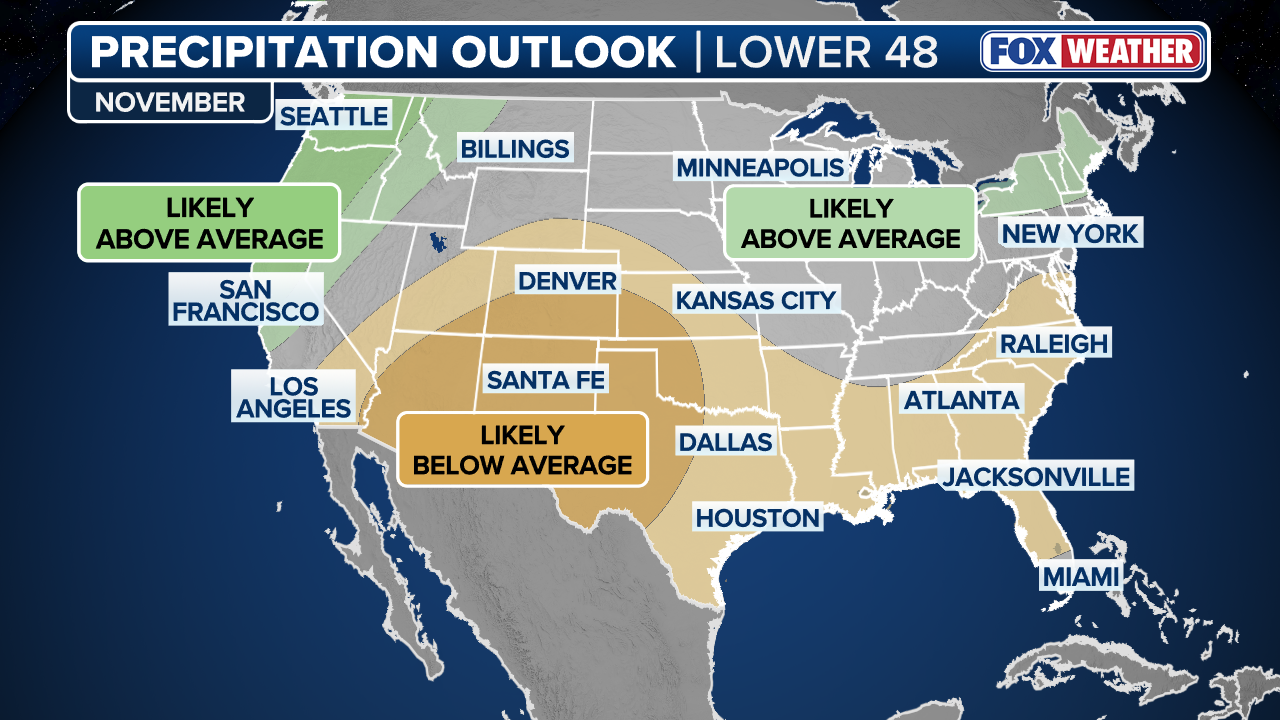
(FOX Weather)
The Northern tier of the U.S. will remain active across the month, including the Pacific Northwest, where above-average precipitation is expected to continue to soak the region.
November’s precipitation outlook falls in line with a typical La Niña pattern, wetter than average in the North and drier to the southeast.
End of daylight saving time brings earlier sunsets
In November, Americans hoping to get a tan might have to hit the salon. Whether you like it or not, with November comes the end of daylight saving time. It’s time to “fall back”, because on Nov. 2 at 2 a.m., the vast majority of Americans across the country will roll their clocks back one hour, except for Arizona and Hawaii, which run at the same time throughout the year.
In addition, the march toward the winter solstice means shorter days, with another hour or more loss of daylight across the northern tier.
(FOX Weather)
Source link
editor's pick
latest video
Sports News To You
Subscribe to receive daily sports scores, hot takes, and breaking news!

